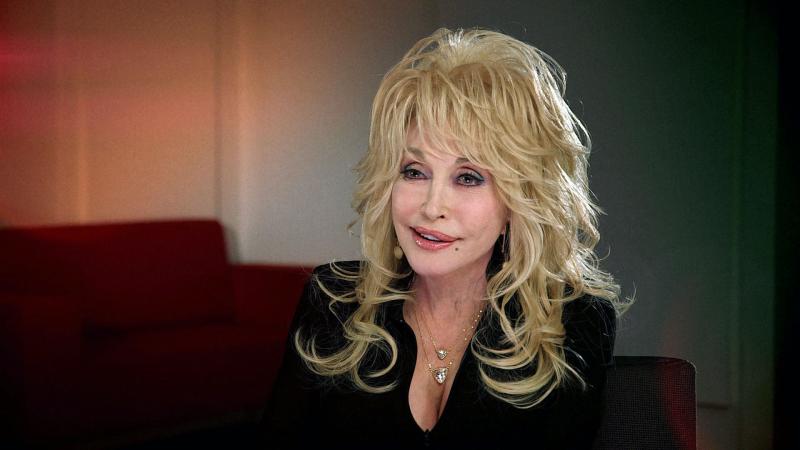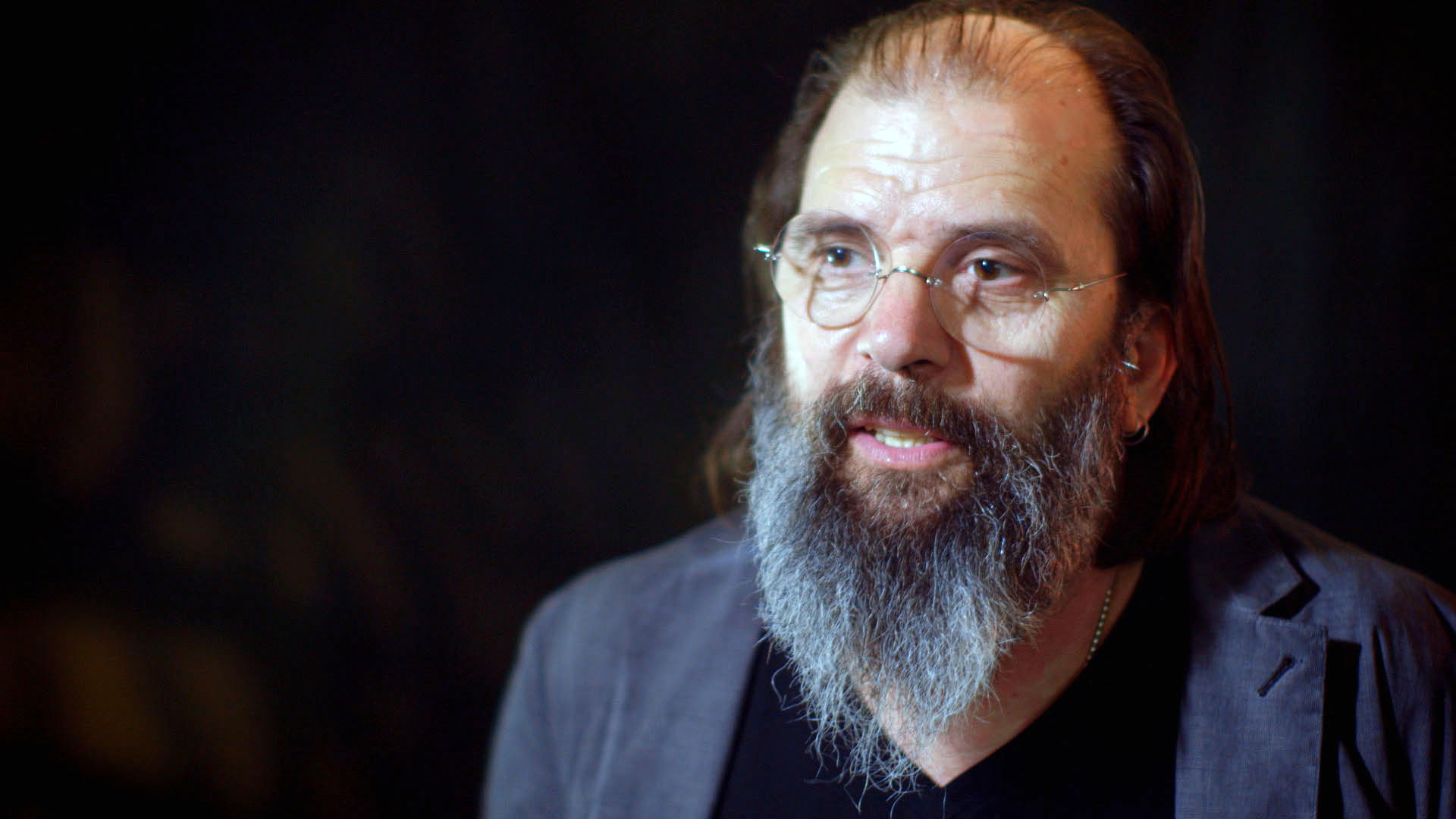The Heart of Country – How Nashville Became Music City USA, BBC Four | reviews, news & interviews
The Heart of Country – How Nashville Became Music City USA, BBC Four
The Heart of Country – How Nashville Became Music City USA, BBC Four
Colourful talking heads bring to life a music both familiar and exotic

It’s supposed to represent everything simple and homely, for a white audience at least, its tales of God, family and heartbreak the stuff of everyday America. For British listeners, more at home with “Parklife’s” dirty pigeons and cups of tea than Dolly Parton or Johnny Cash, the cultural background needs more sketching in, and BBC Four had its work cut out telling the story of a city, and a music both so familiar and so exotic.
The programme’s procession of talking heads had to cover the ground rapidly, without the slick editing of, say, the HBO-made Sonic Highways, in which Dave Grohl and his band Foo Fighters explore America’s musical cities. The stitched-together clips, shown in straightforward chronological order, would have benefited from a little more context, but these were plain-talking people, leading extraordinary lives, and with a knack of getting their message across, and most of it was fascinating musical history.
It’s nearly 90 years since WSM Radio (the promotional wing of “We Shield Millions”, a life insurance company) began broadcasting country music from its iconic 243-metre, diamond-shaped Blaw-Knox antenna (now a part of the Country Music Hall of Fame). Then, in 1925, Nashville’s prosperity was based on respectable businesses selling the two quintessential supports of American provincial life, Bibles and life insurance, and several contributors noted that her society then was proper, religious and conservative, worlds away from the shenanigans of, say, Robert Altman’s 1975 film Nashville.
The musicians seem warm, original and authentic, while the studio bosses are attributed with every cliché of corporate avarice
For the next 20 years, country music was essentially a regional phenomenon, built on the tension of sacred and secular, the temptations of the downtown saloon becoming the central theme. It was only after World War Two, as large numbers left the rural South for work in cities, that country music’s popularity spread in the exiles’ record collections. WSM’s “Grand Ole Opry”, a weekly country radio show running continuously since 1925, established a huge audience with the near-nationwide nocturnal reach of AM radio, and country music stations increased nearly tenfold to 600 during the 1960s.
No sooner was it established as a force in the entertainment business, however, than threats to the Nashville studio system also appeared. First was Elvis’s manager Colonel Parker, who bypassed the country music system in the late 1950s by selling Elvis to teenagers. A pattern of regular artistic rebellions against an over-mighty and homogenised studio system emerged early on, and was repeated frequently. Perhaps the most entertaining rebels were The Outlaws, a band featuring Waylon Jennings, Willie Nelson, Jessi Colter and Tompall Glaser which outwitted the country music establishment at its own game of exploiting Southern identity and iconography. The cycle of repression and reinvention continued into the 1980s, when Steve Earle (pictured below) reinvented country, and again in the 1990s, when Garth Brooks did the same.
 Despite its reputation for conservatism, country music has given strong women a voice, from Patsy Cline, via Dolly Parton and Tammy Wynette to young singers like Kacey Musgraves. Charley Pride, the first black country singer, recalled the unexpectedly warm reception he had from country audiences during the Civil Rights Movement. Throughout, the musicians seem warm, original and authentic, while the studio bosses are attributed with every cliché of corporate avarice. Some attempt to add light and shade would have been welcome.
Despite its reputation for conservatism, country music has given strong women a voice, from Patsy Cline, via Dolly Parton and Tammy Wynette to young singers like Kacey Musgraves. Charley Pride, the first black country singer, recalled the unexpectedly warm reception he had from country audiences during the Civil Rights Movement. Throughout, the musicians seem warm, original and authentic, while the studio bosses are attributed with every cliché of corporate avarice. Some attempt to add light and shade would have been welcome.
The last ten minutes, recounting the scene today, was an anticlimax, betraying somewhat the notion of “music city USA”. In some ways, little has changed: journalist Grant Alden explained that country radio still has a template successful artists are required to conform to, something the musicians themselves seem happy to do. We heard from Jason Aldean, who still sings “about bonfires and pick-ups”, and the witty, frank Musgraves, straight from the strong country woman ideal. Inevitably, though, this is less exciting now than when the pioneers of female country singing first created the role.
Meanwhile, the example of someone like Sheryl Crow, who came to Nashville to record her last album, Feels Like Home, having previously worked with pop studios, is unmentioned. In some ways, this is the reverse journey of Dolly Parton’s 1980s career. If Nashville can create an attractive template to draw in musicians from other genres, the tag “music city USA” might mean something.
Add comment
The future of Arts Journalism
You can stop theartsdesk.com closing!
We urgently need financing to survive. Our fundraising drive has thus far raised £49,000 but we need to reach £100,000 or we will be forced to close. Please contribute here: https://gofund.me/c3f6033d
And if you can forward this information to anyone who might assist, we’d be grateful.

Subscribe to theartsdesk.com
Thank you for continuing to read our work on theartsdesk.com. For unlimited access to every article in its entirety, including our archive of more than 15,000 pieces, we're asking for £5 per month or £40 per year. We feel it's a very good deal, and hope you do too.
To take a subscription now simply click here.
And if you're looking for that extra gift for a friend or family member, why not treat them to a theartsdesk.com gift subscription?
more TV
 Blu-ray: The Sweeney - Series One
Influential and entertaining 1970s police drama, handsomely restored
Blu-ray: The Sweeney - Series One
Influential and entertaining 1970s police drama, handsomely restored
 I Fought the Law, ITVX review - how an 800-year-old law was challenged and changed
Sheridan Smith's raw performance dominates ITV's new docudrama about injustice
I Fought the Law, ITVX review - how an 800-year-old law was challenged and changed
Sheridan Smith's raw performance dominates ITV's new docudrama about injustice
 The Paper, Sky Max review - a spinoff of the US Office worth waiting 20 years for
Perfectly judged recycling of the original's key elements, with a star turn at its heart
The Paper, Sky Max review - a spinoff of the US Office worth waiting 20 years for
Perfectly judged recycling of the original's key elements, with a star turn at its heart
 The Guest, BBC One review - be careful what you wish for
A terrific Eve Myles stars in addictive Welsh mystery
The Guest, BBC One review - be careful what you wish for
A terrific Eve Myles stars in addictive Welsh mystery
 theartsdesk Q&A: Suranne Jones on 'Hostage', power pants and politics
The star and producer talks about taking on the role of Prime Minister, wearing high heels and living in the public eye
theartsdesk Q&A: Suranne Jones on 'Hostage', power pants and politics
The star and producer talks about taking on the role of Prime Minister, wearing high heels and living in the public eye
 King & Conqueror, BBC One review - not many kicks in 1066
Turgid medieval drama leaves viewers in the dark
King & Conqueror, BBC One review - not many kicks in 1066
Turgid medieval drama leaves viewers in the dark
 Hostage, Netflix review - entente not-too-cordiale
Suranne Jones and Julie Delpy cross swords in confused political drama
Hostage, Netflix review - entente not-too-cordiale
Suranne Jones and Julie Delpy cross swords in confused political drama
 In Flight, Channel 4 review - drugs, thugs and Bulgarian gangsters
Katherine Kelly's flight attendant is battling a sea of troubles
In Flight, Channel 4 review - drugs, thugs and Bulgarian gangsters
Katherine Kelly's flight attendant is battling a sea of troubles
 Alien: Earth, Disney+ review - was this interstellar journey really necessary?
Noah Hawley's lavish sci-fi series brings Ridley Scott's monster back home
Alien: Earth, Disney+ review - was this interstellar journey really necessary?
Noah Hawley's lavish sci-fi series brings Ridley Scott's monster back home
 The Count of Monte Cristo, U&Drama review - silly telly for the silly season
Umpteenth incarnation of the Alexandre Dumas novel is no better than it should be
The Count of Monte Cristo, U&Drama review - silly telly for the silly season
Umpteenth incarnation of the Alexandre Dumas novel is no better than it should be
 The Narrow Road to the Deep North, BBC One review - love, death and hell on the Burma railway
Richard Flanagan's prize-winning novel becomes a gruelling TV series
The Narrow Road to the Deep North, BBC One review - love, death and hell on the Burma railway
Richard Flanagan's prize-winning novel becomes a gruelling TV series
 The Waterfront, Netflix review - fish, drugs and rock'n'roll
Kevin Williamson's Carolinas crime saga makes addictive viewing
The Waterfront, Netflix review - fish, drugs and rock'n'roll
Kevin Williamson's Carolinas crime saga makes addictive viewing

Comments
Never mind Sheryl Crow, where